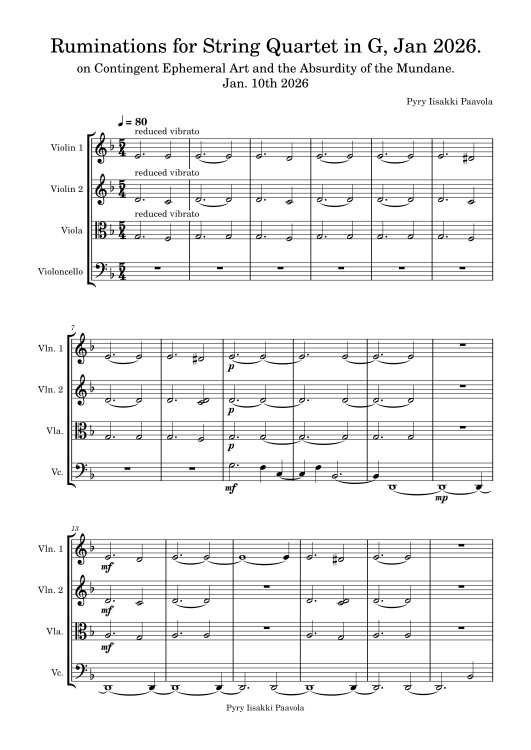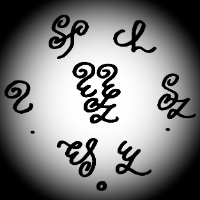Leaderboard
Popular Content
Showing content with the highest reputation since 01/04/2026 in all areas
-
My view on the matter is that while any pieces of "music" that are generated using tools like Suno should be completely banned, the use of AI tools like Cantai to generate mock-ups from midi or notation should be allowed as they are not really any different from generating a mock-up using sound samples (as others have already said). With regards to the issue of how we should go about detecting AI "music", I like @UncleRed99's idea, though I recognise @TristanTheTristan's concern that asking for technical music theory things like starting keys/time signatures may unfairly exclude composers who do not work in theory/notation heavy genres. I propose that we require users to write a short description of their piece naming some musical elements/techniques that were used (e.g. chord progressions, instrumentation etc.) alongside any additional details they might want to mention, like maybe what inspired them?5 points
-
5 points
-
My answer of "Other" on Question 1; I don't downright "hate" the idea of generated music, as we've adapted as a society from traditionally only ever using real live instruments for music, into the use of MIDI, VST2/3, and other realistically generated playback sound. So I believe it has its uses. I've even from time to time, as a sort of "test" to AI like GPT for example, submitted a PDF and .mp3 copy of something insignificant that I wrote to the AI to see if it is truly able to determine the tonality, mood, and atmosphere of the music, while also experimenting with how well it was able to provide fast and productive feedback on the score itself. I can't say it did as good a job as people here who share my level of expertise and well beyond it, but in a pinch, It was able to identify the mistakes that I made, intentionally, on the score, as a test for what it was truly capable of and what level of knowledge in Music theory was available to it. It was dead wrong about a couple of things, as I tend to notice regularly when you ask an AI a direct question without any leading context. So the advice received should be taken with a grain of salt. Also why I believe that Bot generated music can N E V E R be a genuine form of music simply due to the fact that it's incapable of understanding the true purpose of music, it's intended affect on the human mind and emotional center, and will never be able to live up to the true original's standards of creativity. All it will do is utilize what it can find online and on streaming platforms to mimic impactful sounding music. Which to some may be enough, but to me that undermines the entire community of people who spend hours, days, weeks, months or even years to compose something intricate of the same length / duration of music that could be created with AI in seconds, and is created without any true "thought" or "feeling" put into it. Regarding my Other answer of the last Question; Potentially, we could add a form to fill out with required fields in the sub-forums for music submission posts... Such as; Work Title (untitled if not yet established): _________________________________________ Composer/Username: _____________________________ Key Signature (Maj./Min.): _______________________________________ Starting time signature: ______________ Instrumentation or Ensemble Type: ___________________________ Additional Details: ___________________________ Description of Piece: _______________________________________... *required Please attach a plain (or) watermarked PDF copy of your score (for Notation Software Users), including either a YouTube Link or attached .MP3 file for playback. If using DAW software, please attach both a MIDI file, .MP3/YT Link, as well as a description of MIDI, VST2/3 Instruments used and a few of the FX Editor plugins that were used, in order help maintain the orchestral compositional authenticity of our community 🙂- Sorry, must've had a brain fart right here. fixed it. Obviously this is simply a suggested set of questions that would be up for consideration, editing/alteration, omission etc... but I feel that this would curb most if not all low-effort "hey guys look, I just wrote this today" **(Attaches a fully mastered, 5 minute long EDM track, fresh out of the shower wearing Day clothes after trying to pass it off like they created a fully completed track with full mastering and editing by working on it tirelessly all day long just for it to have been an AI the whole time after they simply asked it like 3 prompts to alter results...)**5 points
-
Although I hold that AI music is still technically music, however unethically created it is, AI music is certainly not composed. It's more so generated, and this site is arguably about the composition of music, not the music itself (although, it seems that many users haven't grasped this). For that reason, my mind is most open to being changed on Question 2. Currently, I've selected the second option—creating a sub-forum and barring AI submissions to be entered into competitions—but if someone was to push hard for banning all AI music on account of it being against the spirit of being a composer, then it's not like I'm gonna push back too hard. However, I'm sympathetic to the idea that AI is here and will be here for a while, if not permanently, so banning it outright feels a little close-minded when there's still things to be learned from it (more socially and economically than practically), just not strictly composition. I'm seeing a lot of exceptions being made for vocals/SFX creation after something has been written and making rules that are clear and foolproof to distinguish that is going to be hell, but I think it's better to have the word of another person as to the extent AI was used rather than just trying to use an AI checker or a filter. As pointed out before, those things are really murky and spotty. I don't really care about the “emotions” behind it, because—let's be real—tons of music gets written for a paycheck with no emotion or humanity. That's not a measurable quality, as far as I'm concerned. I also don't really care about the amount of effort or time put into a piece; some things are just easier for different people. As for feedback, have you seen Google AI? It could tell me the sky is blue and I'd look out my window to go check. No way in hell is that level of intelligence going to have reasonable critiques beyond just telling me what Roman numerals are being used, which isn't analysis in the first place.4 points
-
Exactly. Completely agreed. It wouldn't be appropriate to post, say, a Haydn string quartet in the "share your work" forums, because it's not your work. In exactly the same sense, it doesn't make any sense to me for someone to post an AI-composed piece here, because it's not the poster's work. What would be the point? Best case, you fool people into thinking it's your own work. What then? People give you feedback, assuming you wrote the piece, and that feedback is totally useless to you since you didn't, in fact, write the piece. I suppose maybe somebody will say, "Good job," to you, and OK, congratulations, you tricked someone into praising you. (Though, I must say, to date, I still have not heard an AI-composed piece of music that I thought was anything better than mediocre). This is exactly what I can't understand. What would anyone expect in response to a piece of AI-generated music? Sure, I could pretend that a human actually wrote it and write a critique of it based on that fiction, but I can't imagine why I would ever do that, nor can I imagine what use that would be to the person who posted it.3 points
-
@chopin Glad you liked it! Yeah, the whispers of the old theme coming back was a really captivating idea for me, but the best part is that I'm sure another talented analyst could analyze it in a completely different way than I did! @Luis Hernández Thank you! @Thatguy v2.0 Nonsense, the fact that you're able to even listen to it—let alone enjoy it—means that you're worth your salt! And yes, it's why I have so much solo cello rep... I can actually play it. 🙂 @Wieland Handke Thank you so much, that's a great image! And wonderfully wholesome for something that be construed as being so eerie. My respects and humble thanks to all of you!3 points
-
Here is a list of Manually-Awardable Badges that aren't directly related to a competition or event: Musical Debator Melophile Holding Strong Opinions History Buff Philosopher of Music Theory Buff Orchestration Buff Keen Ear Keen Eye Musicologist Ivory Tickler Symphonist Chamber Guru Troubadour Concertophile Outstanding Orchestrator Maestro Soloist Master of Improvisation Skilled Arranger Film Buff Video Game Buff You've Got Rhythm Got Published Got Performed Tune Smith Prolific Composer Counterpoint Wizard Sick Beats Period Composer Ardent Producer Hepcat Aleatoric Composer Bando Drum Major Pop Song Aficionado Brass Aficionado Woodwind Aficionado String Aficionado Film Composer Recording Artist Musical Dramatist Challenger Avid Listener Musical Socialite Ingenious Harmonizer Dance Music Impresario Headbanging Rocker Musical Storyteller Musical Explorer VGM Enthusiast Film Music Enthusiast Sculptor of Sound Audiophile Idea Peddler Star Performer Choir Master Musical Architect Immaculate Engraver Impeccable Taste Local Lurker Abstract Composer Guitar Guru Collaborator Accomplished Virtuoso Musical Advisor Elegant Classicist Amorous Romanticist Programmatic Composer Master of Subtlety Dedicatee Lo-Fi Audiophile Better Than Thatguy Lavender Hands Effect Ardent Reviewer Feel free to suggest badges as well! - PeterthePapercomPoser3 points
-
I think that Ai music is just pure laziness and Is probably one of Three things. 1: I want to win a competition and have a good reputation. 2: I'm just Trying to make a non - Ai song but I want to have some sort of sound effect/thing that I can't get normally, or Three: I'm just pure laziness or not an actual composer. I think that All AI generated/refined Music should be completely banned, with one exception: if the AI did a very small thing like making a sound effect used once or It tells you which note sounds better after a certain one or something. If the actual MUSIC part is generated by AI or almost all of your lyrics (If you have any) should be banned; But if your just playing around and say that it was Ai, and it is not serious it might be allowed. (For 3 I chose other, I think that if someone's music is AI, they should just say so.) oh and It would be really stupid to use AI detection to see if pieces were AI but moderating might work.3 points
-
1. I'm not sure if the anti-AI detection algorithm would work 2. if we accept AI in compositions, submissions must thoroughly declare any AI involvement in composition (explain which exact ideas/parts/transformations/revisions/etc. were driven by AI and how exactly was AI used in those parts like, total LLM prompt? vague idea? proofreading? etc. generative vs analytic?) 3. I think a complete ban on AI might look close-minded (even though I am actually not against this entirely at all at this point in time), but the world is still at its infancy of dealing with AI/LLM (which itself is also at infancy), and right now at most I would be open to a severely restricted use of AI. As time goes by I might eventually be more open. 4. the problem with enforcing these rules is we might "overcorrect" and label genuine works as "AI"esque. this goes back to my first point, we don't want to mirror YouTube's AI-takeover in doing copyright claims and reports which mostly just benefits big companies.3 points
-
My feeling is that, regardless of your opinion on AI music, this is a composition forum. Prompting an LLM to generate music is not composition. Therefore, it has no place on this forum. It's as simple as that for me.3 points
-
Quoting what I wrote in a thread earlier: Furthermore, unless a sub-forum for AI music can be quarantined, I strong believe that all AI music should be banned. Quarantining in this context means nothing posted in this sub-forum will be presented to users by default, unless they specifically looked for it (new posts/replies in this sub-forum will not show up on the sidebar on the main page etc). Without quarantining, just making an AI sub-forum is the equivalent of allowing AI to exist on this website in its current form.3 points
-
2 points
-
Among all the other previously published canons of its type, this one might as well have turned out to be the most demanding to perform, in no small part due to the choir's conventional maximum ranges being reached in at least three voices, including both soprano (C6) and bass (E2), making it no small feat to sing. The main lyrics would roughly translate from Latin to English as follows: "In the direst of circumstances the true heart of men shall sing with great hope of leaving behind a memorable life. Even death can conquer those whose memory lies in the glory of their good deeds." The coda, as per usual, reinforces the core message in a variety of ways. YouTube video link:2 points
-
Hello there Pyry, I appreciate your comment and I like that you are giving your opinion in such a peaceful way, unfortunately the score for this composition as for some others is lost and as it is finished I didn't have a reason to make it again and it is not an easy thing to do actually, I had kind of the same opinion from one friend that I had who plays the piano and composes also, and I will agree with you at some point as I did with him and with myself, I hate my music more than anyone but I also like my music more than anyone and I'm listening to it like a drug addict and I always want more from me so I know exactly what are you talking about and thank you for mentioning it with honesty. Best wishes from Greece, Demertzis2 points
-
Hello, I recently finished a piece, Introduction and Waltz, and am wondering if the score is MOLA ready. I'm submitting to a competition thats due on the 10th (parts are not required til a later date). Thanks a lot and feel free to also listen and give feedback!2 points
-
Happy New Year to all! For my first post of 2026, here's my orchestration of Medelssohn's Barcarolle from Songs Without Words. It's more or less done; though I may add more dynamics to match the original piano work, and need to add more slurs. Current dynamics are intended for midi playback: so I will be adjusting those for real life performance. Haven't decided where to mark a2 and solo in the winds: so any tips on that would be really helpful.2 points
-
Let us and the other members of the forum know how you feel about including an AI sub-forum on Young Composers Forum! Reply to this thread if you don't see an answer in the poll that you'd like to see (click "Other"). The staff will take into account the opinions of the members at large but reserve the right to make the final decisions regarding the future of AI on Young Composer's Forum. During the recent 2025 Christmas Music Event the Young Composer's Forum has experienced an unprecedented influx of AI generated music into the forum. This has caused quite a bit of contention and adversity not only for the members but also for the staff. We have argued about all the different reasons why AI should and shouldn't be included in the forum and have given many different rationales for each point of view. Here are some of our thoughts: @chopin: I'm ok with it, as long as submissions are handled in a dedicated subforum, AND the following: You must explain your process. Did you write a series of prompts? Did you mix tracks? If so, are these tracks AI or human created? If this is a song with lyrics,the lyrics must be original. @Thatguy v2.0: I think AI generated music should be banned on our forum. I'm not talking about it's use in sound samples, like AI generation in voice samples for a vocal piece, or making string instruments sound as lifelike as possible. Sound samples are just really good now. This is a composing forum, dedicated to the art of composition. Typing words as a prompt for machines to output sounds is offensive to me as an artist, especially when calling it your own composition. The issue I have with an AI subforum is that it will always be tied to the site as a whole. The original intent of a place where young people could learn from more experienced composers and also share compositions of all styles and skill levels is gone. I'm sure it's neat to see what AI comes up with with whatever creative words one could share with it, and I'm also sure that we could all learn some interesting things from it's output. But do we need YC to have that? Or should that knowledge be gained somewhere more appropriate? Analyzing it from a studious viewpoint isn't something I'm guessing would be the reason people are sharing their AI music. It will mostly be just promotion, but maybe I'm wrong on that (I guess a lot of people already use YC for that lol). @Henry Ng Tsz Kiu: I am against AI music, since I think it's sacrilegious to those who really work hard on their own to write their music. Using AI to compose for me is just an act of theft without really assimilating those great music in the past. To involve AI to their creative process to compose and call the outcome "their" "music" and call themselves "composers" is just a shameful act. YC to me is a place where both the composer and the reviewers can learn by giving and receiving feedbacks, and both sides should have give and take. In the case of AI "composers", they can only take and wouldn't be able to provide useful feedback except luring other members to use AI like them (just like drugs), and when they receive any feedback they wouldn't be able to change the details of their very "own" "music", apart from clicking another button to create another music track. This will literally ruin the crucial function of YC as a forum. Nonetheless I still welcome an AI subforum, definitely not for the reason of liking AI music, but to me it's like the legalisation of alcohol and smoking. There's no way to prohibit people using AI to "compose" at all, and given the trend the number of AI "composers" will only increase. Having an AI subforum may attract those newcomers who don't know how to write to our forum, check out other members' works and start to really write with their brain, instead of outsourcing their brain to AI. Also, AI may develop in a way that knowing its trend would be important, and having an AI subforum would be beneficial to knowing the trend. Prohibiting AI music to enter any events/competitions is my bottom line. @Omicronrg9: (he is sick and will express his opinion in due time) @UncleRed99: (see his reply below) @PeterthePapercomPoser: My rationale for why AI music should be included is that I, as a composer, value good music and good musical ideas regardless of where they come from and am always willing to learn from whatever piece of music gets created either by human or machine or a combination of both. My rationale for not including AI is that it might open the forum up to people who inspire dissent on both sides of the aisle. Composers who don't use AI may inspire dissent because they don't want to be classed among others who just wrote a prompt for an AI and want to call themselves "composers" for that reason. People who support AI and use AI to make music may inspire dissent because they think they belong to our community without the knowledge and effort that such membership usually requires. Those "composers" then feel on an even playing field and feel free to critique or evaluate other composers music without really knowing nor caring how much know-how it takes to create your own piece of music from scratch.2 points
-
Last year, I came across Sara Teasdale's poetry and a lot of what she wrote about on love, beauty, fear, even death resonated with me. What really peaked my interest was her poetry book of love songs where she expresses her ideas and beliefs about what it means to be loved and to love. "Child, Child" is a heartfelt ballad set in the key of D-major with many legato phrases. The opening theme is the driving point that follows the piece through the beginning, middle and end and changes meaning through each repetition. I use it to tell this story of romance sweeping us off our feet in ways that feel enchanting, and breaking us down when we least expect it. Yet, through it, we still find the courage to love and start anew time and time again. Love--be it heaven or hell--is to hold dear and to cherish. After a pretty rough time last year emotionally, Teasdale's poetry gave words to my feelings and inspired me to write. I hope this piece resonates with you as well. Please enjoy <3. Also Happy New Year!!! Text: Child, child, love while you can The voice and the eyes and the soul of a man; Never fear though it break your heart -- Out of the wound new joy will start; Only love proudly and gladly and well, Though love be heaven or love be hell. Child, child, love while you may, For life is short as a happy day; Never fear the thing you feel -- Only by love is life made real; Love, for the deadly sins are seven, Only through love will you enter heaven.2 points
-
Hi @ComposedBySam! Really like your poem, piece and singing! I like the occasional short imitations between parts like in b.9 or b.17 which strengthen the chasing theme. I really like the "dismantle this church that bows before strife" lyrics when you really dismantle by getting up an octave and ends on a high register, and then a half cadence which is resolve sacarstically to A minor. Wonderful job here. And also the "sacrificed in vain" lyrics when the voice ends in confusion with diminished 7th chords and the voice breaks off! The F minor modulation in b.47 is wonderful when it's matched with "grave" in the poem! A wonderful lied in my opinion. I think you should definitely make more lieder out of your poem, instead of having a strophic setting, because your through composed technique is wonderful and well matched with your lyrics! Thx for sharing! Henry2 points
-
@Aiwendil Exactly. Those who favor AI do not want it monitor and regulated. But there was incident in holiday contest where someone used suno. Imagine Suno was used in real life. Then what?2 points
-
Follow up: If there is sub-forum for AI, how will that impact the forum as a whole? How do you review entries with AI? See, this is dilemma we are facing. My position stands: We should regulate and monitor if users Suno. Ban it from competitions. And not have a separate sub form AI. If AI is abused, then ban it. If it is used in with other sub forums, @UncleRed99 idea is great. Industry standards should be allowed. As usually, provide a score (if there is one) and an audio file.2 points
-
Hey, this is great and has a lot of potential; I hope you keep writing! Lots of very cool moments and bits like the way you harmonize the very first “Shew me thy ways, O Lord”; vii˚7/vi–vi? How cool is that, especially since it's a lot more harmonically standard the second time around. I'll mainly focus here on “Shew me...” since it's a little easier to parse the score quickly: 1. m. 5's two-beat long semitonal dissonance is already striking enough, but having the suspension resolve upwards is even more noticeable. Not a strict problem, per se; it's just maybe a little overly noticeable. 2. m. 7, V7 without the third except in an ornamental figure, approached by 4-5 motion in first species. 3. mm. 8–9, “Shew“ is three quarter notes for a one-syllable word. There's a couple other measures where you have one syllable sung on repeated notes. 4. m. 11, unnecessary whole rest break in V1. 5. mm. 14, 17 & 22, similar issue to Point 2. Also, unnecessary breaking of the quarter rest in vocalist's part in m. 14. 6. m. 26, “O Lord” breaks the more natural setting of the scansion you had in mm. 10–11. 7. Keep “teach” as one word spelled correctly (don't double the “e”). 8. I would add some bowings; some are great, like the one you have in m. 13 in V2, but take a little time to make sure that the most natural style (down bow at the beginning of the measure, especially with all of these quarter notes) is preserved unless marked otherwise. Of course, Points 2 and 4 can be fixed with a continuo part with figures; I heard it in the background, but it just seemed to double the celli and bassi. Again, it's exciting to see where this could go! Solid start!2 points
-
“I’m beginning to write a small oratorio, Everywhere there’s notes! Take a look at the fifths and tenths, some intervals are immense, At half past three my laptop screen’s aglow!”2 points
-
Thank you for sharing this wonderful Prelude-and-Fugue piece. Since I also compose preludes and fugues, I am very excited and interested in reviewing such a pair. And indeed, I really enjoyed it and have now a few thoughts or comments which are not to be considered as „criticism“, but rather intended as an advice or idea how this beautiful piece could be improved further and finally made „great“: When listening to the prelude for the first time, I clearly recognized the Baroque style of a French overture with its double dots and 32nd runs, but there were something stylistic that differed from a typical Baroque and counterpuntual piece. Now, after listening multiple times and with the help of the other comments, I figured out that this is due to the repetition of measures 1-14 in bars 15-27, which means that up to this point there is no real modulation away from the tonic G minor. There is nothing wrong with it, but I would agree with the suggestions of @muchen_ and @Willibald to possibly change something concerning the modulation and recurrection of the material, also with respect that usually the prelude is not longer than its fugue. The fugue subject is very memorable and expressive, I especially love the „wedge-like“ ending in mm. 68, which, in my opinion, implies that the theme should not end with the first eighth note in bar 68, but should extend over the entire four bars. In the comes in bar 72, you have already quoted the “wedge,” even though this bar is a variation of the original, while in the third entry in bar 76, the “wedge” is completely lost, which I regret. In measures 80-85, 87-95, and 96-103, you have created three (or even four) sections with sequences based on different contrapuntal material—for example, quotations or parts of the theme—which would be perfect as interludes or episodes between further development (or exposition) sections of the fugue theme. And that is exactly what I would like to see: at least two further developments of the excellent fugue subject. I also could imagine a coda with a pedal point and perhaps a recurrection of the 32nd notes texture from the prelude as ending climax! With this in mind – to shorten the prelude and to extend or „complete“ the fugue – your piece could become a marvellous pair – Prelude and Fugue in G minor!2 points
-
Hi @Willibald! I just check out the 4th movement and it’s a lively nice rondo, I like your B minor episode inviting some contrast. Thx for your update! Henry2 points
-
That's covered by the "Musicologist" badge. Google: "Musicology is the scholarly study of music, exploring its history, cultural contexts, theory, and social impact, encompassing all musical traditions from classical to popular music, beyond just performance. It uses various methods, including analysis, history, and anthropology, to understand how music functions in life, its development over time, and its relationship with psychology, sociology, and other fields. Traditionally divided into historical, systematic, and ethnomusicology, modern musicology is broad and interdisciplinary, focusing on meaning, practices, and the "web of culture" surrounding music."2 points
-
1. When it comes to platforms like Suno, that should be regulated: it should not be used in competitions, detection should be used, and if there is abused it should be banned. When it comes mock ups in the Daw or in notation (Note perfomer, vst, etc): For the composer plays the notes into the program, and such. Sometimes, we do get lucky and have live performance. I think it would be cool, if there was sub forum to share our live performances. 2. A pianist and composer, I'd prefer if someone who did not use AI. 🙂 3. I agree with @UncleRed99 Idea. In traditional music, you can generally see the key, meter, and etc, but with lyrical songs we can't see that.2 points
-
Thanks, @Henry Ng Tsz Kiu, for your kind words. I took up your suggestion and tried to compose a fitting end for this set. So without further ado: a draft for a fast-paced 2/4-Presto with the basic structure |: A :| b1 b2 b3 |: A : |: c1 : | c2 |: A :| The audio file needs some polishing. Any comments welcome.2 points
-
Does GarageBand Drummer count as AI? I've used this once or twice in the past. Though I made lots of manual tweaks to create alternating rhythms and percussion techniques in different sections of the piece. So it wasn't purely AI driven. I've also used AI to create cover art for my scores.2 points
-
Ai should only be used for learning composition, not doing composition.2 points
-
I will also add that I think video should be encouraged as the primary detection means. Almost every computer today has built-in screen capture software that will allow you to record daw/notation playback effortlessly.2 points
-
Thank so much for the positive feedback! Sorry, I didn't have time, and this is rare spare time I am using right now. I am extremely happy that my piece has mesmerised so many of us, and, I am surprised of your dedication to listen for so long! Lastly, I have to thank you and all of the others who have listened to my music in this thread. PS., is there anyway to have a mod or pack or so anything to improve musescore's sound?2 points
-
Thanks to all 20 participants who submitted a whopping total of 26 submissions to the 2025 Christmas Music Event! They will be the recipients of the "2025 Christmas Participant" award! - A Christmas Mash-up by @PeterthePapercomPoser Jesus was Born this Day by @Vonias Another Christmas Mash-up by @PeterthePapercomPoser My submission to the 2025 Christmas event!!!!!!!!!!!!!!!!!! by @therealAJGS Song for the Fallen (2025 Christmas Music Event Submission) by @Musicman_3254 Submission to the 2025 Christmas Music Event by @TristanTheTristan March of the Gingerbread People (2025 Christmas Event Submission) by @Crescent Roulade Fugue on "We wish you a Merry Christmas" (2017) by @J. Lee Graham Motet a 8 "O Magnum Mysterium" in E-flat Major by @Fugax Contrapunctus fantasia on jingle bells (2025 Christmas Event Submission) by @Monarcheon March of the Snowflakes - 2025 Christmas Event Submission by @Vavrinec O Soul, Seek Revelation 14:9-11 by @SeekJohn14v6 (Very Casual) Christmas Mesh Up by @HoYin Cheung The Empty Church - Submission to the YCF 2025 Christmas Event by @Wieland Handke Highland Shepherds - Submission to the YCF 2025 Christmas Event by @Wieland Handke Jingle Bells and Dashing Through the Snow by @chopin Christmas Carol by @Aiwendil Instead of Christmas (Submission to 2025 Christmas Event) by @Luis Hernández Coventry Carol (Christmas 2025) by @mercurypickles With Every Beat My Heart Knows by @HoYin Cheung A Christmas Scherzo by @PeterthePapercomPoser I composed a Christmas Song! - It went great! by @raymond doerr My Christmas Submission by @Mooravioli Christmas Mash-up No.3 by @PeterthePapercomPoser Glory to God by @SeekJohn14v6 Nutcracker inspired final by @Tunndy And thanks to all the reviewers who ardently and painstakingly reviewed all the entries to the event! (the AI generated ones aren't required): @chopin, @Henry Ng Tsz Kiu, @Wieland Handke and @PeterthePapercomPoser. They will be the recipients of the "2025 Christmas Reviewer" Award! - (Note that if people still want to review all the submissions after December 31st, they are free to do so and be added to the list of "2025 Christmas Reviewer" Award recipients ex post facto. Check how many more reviews you need to make before getting the badge in the 2025 Christmas Music Event Reviews Spreadsheet. If you're not on the list yet I will add you once you review a more substantial number of pieces.) And thanks to @PeterthePapercomPoser for the event announcement thread, managing new submissions, creating the Christmas calendar event, advertising the event in various discord servers as well as making this conclusion thread! He will receive the "2025 Christmas Organizer" Award! - And we all hope that you had a Merry Christmas and that your 2026 year will be great!!! To see the 2025 Christmas Music Event announcement thread go here:2 points
-
This is a secco recitative in the late Baroque style for alto, part of my cantata WIP. The text is taken from Goethe's Die schöne Nacht. An example translation of the text can be found here. I have also attached a little preview of its paired aria 🙂1 point
-
Poem: w- wheigh- waken oh wheigh- oh waken glare... ...dithers ...flares ...n'fathom ...oblivio- Explanation in score :). Musescore.com Link I have a love for minimalist, kinda hard to understand poetry like this. I have been in a composer's block for a bit and decided that wth, I'll make a score in the same way I've taken to poetry: With limitations and a time restraint. You may disagree with my interpration of the scale, that is OK with me. It is more of a label than anything else, at least I struggle to find a clear tonic in pieces like these. Really the decision of the scale and therefore my naming of the piece in B-flat is just based on my initial limitation. Microtonal fingerings have been tested (and measured) by me on the clarinet. For a player more clarity would obviously be involved (charts). Explanation (5th page, not sent here because it includes personal information): Poem explained: w- wheigh- waken oh wheigh- oh awaken glare [at the sun] [the sun] dithers [the sun] flares [the sun does] n'fathom (=doesn't fathom) [to your existence the sun is completely and utterly] oblivio-[us] Liner note to composition: I was experimenting with some notes on the clarinet and ended in a fun pentatonic scale. In a throwback to an interest, or perhaps an obsession, in obscure scales I had back around the time of Covid, I decided to try to limit myself into an odd scale. In B flat the scale is basically a Lydian with a minor seventh and an augmented third. The intro and outro (solo parts) experiment with some very small microtones I found on the clarinet. For any additional information or questions, feel free to contact me Written on the night between jan 4th and 5th 2026 while watching the WJC ice hockey match between Finland and Sweden.1 point
-
Probably, but it's not actually doing anything that isn't already a standard feature really in drum kits for years. Premade beats. I would point out that on marketplaces like gamedev market, they forbid AI art assets, but allow composers to use AI cover art.1 point
-
1. How do you feel about including AI generated music on YCF? In my opinion, AI generated music is misplaced in the general submission threads and competitions/events on this forum, since the purpose of the forum is to exchange about the composition process, results, difficulties etc. (and not about which music one likes or not). However, to ban it completely would mean to neglect a tendency which is now existing and will further increase in the future. Thus, a special, separated sub-forum could be a compromise, but I have to admit that @muchen_ 's objection and demand for quarantine cannot be dismissed out of hand. 3. If we decide to regulate AI music, how should we detect it? I am (strongly) opposed to the use of online AI detection tools, as they can lead to “false positives” and, in my opinion, their use contradicts the goal of publishing and reviewing only high-quality, human created compositions in this forum. Therefore, the judgement can only be done in the same way as requested for the submissions. With this background, the distinction between genuine compositions and compositions generated (wholly or partly) by AI can only be achieved by making the composition process used by individual members more transparent. One idea could be to create a special section in the forum where each member can post their own topic explaining in detail how they normally work, including the notation software they use, the type of recording (either live recording or with which DAW software), etc. I think anyone who intends to regularly publish works in the forum would appreciate it if others could take a look behind the scenes, so that we could learn a lot from each other. A regular submission of a piece could then include a link to this explanatory post and should, of course, include a PDF score, an MP3 audio, possibly an intermediary MIDI file, a brief description of the musical form, key, time signature, instrumentation, etc., as well as a little background information about the inspiration and idea behind the piece. I think, that if we could encourage members to post their contributions in this way, the overall quality of the forum would improve and, more importantly for the submitters, it would be easier for reviewers to familiarize themselves with the pieces, which would certainly lead to more and profound reviews. (I say that also with the background that some members tend to „flood“ the forum with a dozen of uncommented posts at once – which might be fine but not necessarily leads to many or instant reviews. Sometimes, less is more.) I don't know if such a procedure could be introduced as a “rule,” perhaps more as a “recommendation.” However, if the “experienced” members were to post in this way, they could serve as example for the others.1 point
-
Hi @PeterthePapercomPoser, I forgot to answer to you! I've done a couple guitar impro sessions or compositions where while playing I have intentionally detuned - by ear - to a result that made me feel right. Then afterwards I've finetuned it. It is more about a general colour (and the way guitar reacts to small, constant microtones like these) than anything else. It's completely based on ear :).1 point
-
1 point
-
Hello Folks, this is a 3 movement work I recently finished in my first few weeks of composition lessons. The following three movements are about three leaves as they fall from a tree. For each leaf, a different character is met. These leaves begin in similar places, swaying in the wind, before falling into the world of their character. The first leaf falls and is found by a little kid. This kid plays with the leaf, more excited than any adult could understand. They fly, dance, and eventually sneak together into the house. The second leaf falls and is watched by an old man. The man does not interact with the leaf, but instead is reminded of the beauty and fragility of the world. He remembers his life through this lens. The third leaf falls and is spotted by an angry man, who wants to crush every leaf. The leaf realizes he is coming, and flies with the breeze to escape, before eventually failing.1 point
-
Hello dear composers. First of all, I wish you a Happy New Year, and may this year give you even more inspiration for creating even more music. I present to you the first movement of my new sonata. I must admit that it challenged me quite a bit, but the final result leaves me completely satisfied. Here you will also find influences from my favorite composers, but I feel that, specifically in this movement, I put much more of my own introspective and personal style into it. I hope you like it.1 point
-
1 point
-
Thank you so much my dear @kvothe. I'm very happy that you like it. Yes Mozart schubert and Chopin are there and maybe you are right about Brahms espessialy at the development section. Thanks again for the appreciation my friend1 point
-
Hi all! It's been a bit since I posted on here. Today I'm bringing a couple synth pieces I composed. I've recently been inspired to work some more in this realm. So, I jumped into FL Studio and used some of Analog Lab V's great presets and instruments. The first is called "Moving On"...it's a more uplifting and positive piece than I usually compose. In my mind I see someone moving on from a breakup | life change | childhood home and taking those first steps towards their own journey. For the second piece, I titled it "Running Through the Dark". I leaned into a darker sound for this one, more horror oriented and intense. I envisioned someone in a dark forest running from an unseen force or being. On both of these, I have tried some new mixing techniques to try and make things sound clearer and less jumbled. Hope you enjoy the listens and can't wait to hear your feedback and what images these bring to you!1 point
-
Hey! Thank you so much! First...yeah...force of habit on the date. I updated it, so thanks for pointing that out! Definitely like hearing the comparison to 80s scores though! Those classic scores were definitely an inspiration on these, so glad that came across. It was fun to break into that feeling again, as opposed to orchestral. Plus, coming off the heels of the Stranger Things finale, I've been feeling drawn towards some synth-ier pieces lately. Thanks for taking a few moments to listen!1 point
-
Hello @Vasilis Michael: First, you are very welcome for the shout out. You earned it. Now to the main the event. I can love how the thematic material, which is presented in the exposition, is developed in the middle section. Both P and S themes are phrased well. The Transition between is lovely. The modal mixture is beautiful. 🙂 You can never go wrong with that! I hear Mozart, Schubert, Chopin, and maybe Brahmns (?)1 point
-
Hey @Tunndy! I remember I listened to quite similar music before haha: Maybe you can combine them in one post! I feel like the orchestration here is fuller than the previous versions. It certainly depicts the Christmas mood. Thx for sharing! Henry1 point
-
I started this piece this morning and managed to finish it this evening! My inspiration was to write a fast Christmas piece as my pieces lately have all veered towards the same slow tempo. The form of the Scherzo is ternary and the overall form is Scherzo - Trio - Scherzo. Thanks for listening and I'd appreciate any of your comments, suggestions, critiques or observations!1 point
-
I do not like MuseScore's playback at all, so the fact that I really enjoyed this work despite the questionable playback of MuseScore, tells you everything. This is an impressive work. Is the beginning/ending loosely, Twelve Days of Christmas? After this though, I got so absorbed into your music, I forgot it was a Christmas piece! I don't even care though. You easily captivated my attention for the full 20 minutes, I even went back to listen to the first 5 minutes again because I could swear I heard 12 days of Christmas somewhere! But every part of your work is captivating and you often change it up. I have to say the 2nd half of your piece is even more captivating. This is where we start getting really deep. By this point, Christmas is gone, and we are now in some other dimension. You do manage to bring back 12 days of Christmas about 15 minutes in though, and end on that note. This will of course be an exhausting piece to play. The rigid playback of MuseScore doesn't do this piece justice in my opinion, because I know that if we could get past the rigid playback, this has the potential to sound much more pianistic.1 point
-
Yeah it's a well known fact that people like you use God to consider yourself the ultimate right person and frame other people as blasphemous. The generals and warriors used God to kill in the Cruciata too. I respect everyone who does use their effort to praise God. But to someone who just clicked a Suno button to generate a track and call that a service... that would be what I called blasphemous too.1 point


.thumb.png.8b5b433a341551e913a34392660bc95b.png)
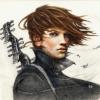

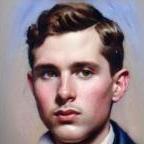
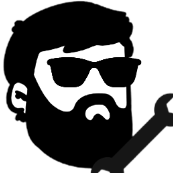
.thumb.png.1e2763f479362bbb522da50d31ef2e50.png)
